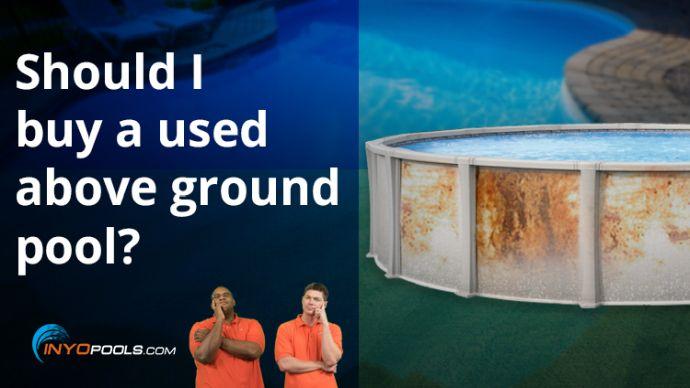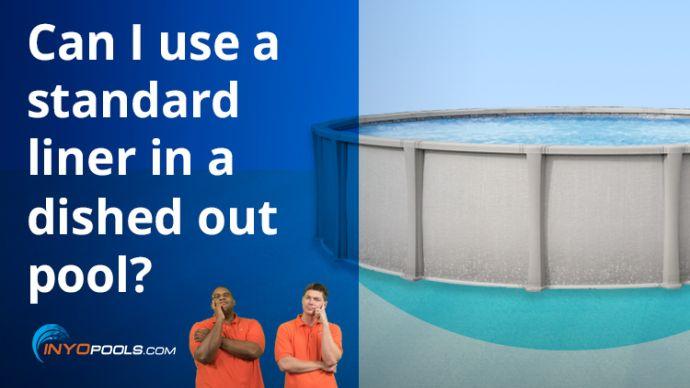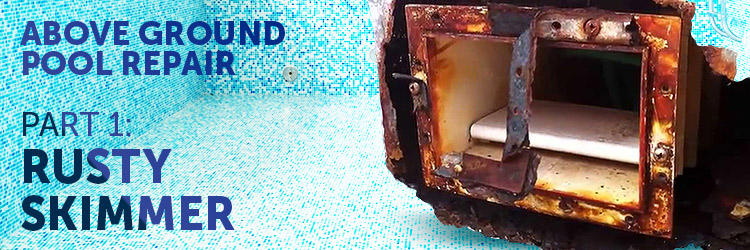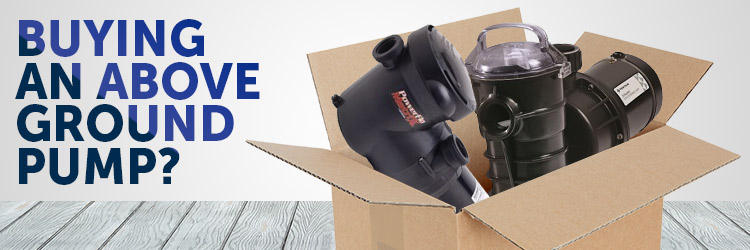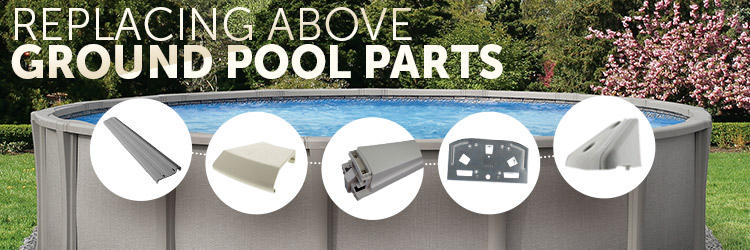
Above Ground Pool Troubleshooting
Resources for fixing your above ground pool problems.

Tip: Consistent maintenance of your above ground pool is key to enjoying clean, safe swimming all season long. Regularly check the water’s chemical balance, skim the surface for debris, and clean the filter to ensure proper circulation. A well-maintained pool not only looks inviting but also helps prevent costly repairs and prolongs the life of your pool and equipment.
Common Above Ground Problems
Click on a symptom that you are experiencing…
Rusty Walls
Problem:
Rust on the walls of an above ground pool is a common issue, often caused by prolonged exposure to moisture, pool chemicals, and environmental factors. If left untreated, rust can weaken the pool structure and compromise its appearance and longevity.
Action Items:
- Clean and Sand the Affected Area: Start by draining the pool to access the rusty area. Use a wire brush or sandpaper to remove any loose rust, then clean the area with a mild detergent and water.
- Apply Rust Inhibitor or Primer: Once cleaned, apply a rust-inhibiting primer specifically made for metal surfaces. This will help protect the metal from further corrosion.
- Paint or Coat the Surface: After applying the rust inhibitor, cover the area with a weather-resistant paint to seal it. Choose a paint formulated for outdoor metal surfaces to withstand water exposure.
- Consider Installing Resin Components: To prevent future rust issues, consider replacing metal parts, such as top rails or stabilizers, with resin alternatives. Resin is rust-resistant and provides added durability.
- Ensure Proper Pool Maintenance: Regularly check water chemistry and maintain balanced pH and chlorine levels. Improper chemical levels can accelerate metal corrosion over time.
Rusty Top Caps, Rails, Stabilizers, Plates
Problem:
Rust on metal components like top caps, rails, stabilizers, and plates is a frequent issue in above ground pools due to constant exposure to moisture and chemicals. Rusty parts not only affect the appearance of your pool but can also weaken its structure over time if not addressed.
Action Items:
- Remove and Clean the Rusty Parts: If possible, detach the rusted components from the pool structure. Use a wire brush or sandpaper to scrub away loose rust. Rinse with water and let the parts dry completely.
- Apply a Rust Converter or Primer: After cleaning, apply a rust converter or rust-inhibiting primer to the affected areas. This product will chemically convert rust into a stable, paintable surface, helping to prevent further corrosion.
- Paint or Coat with Weather-Resistant Paint: Once treated, cover the parts with an outdoor metal paint or enamel for added protection. Be sure to choose a paint that resists water and UV damage for long-lasting durability.
- Replace Metal Parts with Resin Alternatives: If rust is a recurring problem, consider replacing metal caps, rails, stabilizers, or plates with resin versions. Resin is more resistant to corrosion, which can extend the life of these parts and reduce maintenance.
- Ensure Proper Maintenance and Cover Pool: Maintain balanced water chemistry to prevent rust from spreading. Covering the pool during off-seasons can also help protect these components from excessive moisture and reduce the chance of rust formation.
Liner Torn, Faded
Problem:
A torn or faded pool liner is a common issue with above ground pools, usually due to wear and tear from chemicals, UV exposure, and pool use. Faded liners may still function but can be a sign of weakening material. Torn liners, on the other hand, can cause water leakage and structural issues. It’s essential to address these problems quickly to prevent further damage to your pool.
Action Items:
- Patch Small Tears Promptly: For minor tears, use a pool liner patch kit. Most kits come with adhesive and patches designed to adhere underwater, allowing you to quickly fix small holes before they worsen.
- Replace the Liner for Extensive Damage: If the liner has multiple tears, large rips, or is old, replacing it may be more effective and cost-efficient than repeatedly patching.
- Handle Liners Gently: Prevent further tears by being gentle with your liner during pool cleaning, as rough brushing or using sharp tools can easily damage it.
- Use UV-Protective Pool Covers: Covering your pool when it’s not in use protects the liner from direct sunlight, slowing down fading caused by UV rays.
- Balance Pool Chemicals Carefully: High chlorine levels can accelerate fading. Maintain proper chemical levels to reduce the wear on your liner.
- Consider UV-Resistant Liners for Replacement: When replacing the liner, choose one with UV-resistant properties to reduce future fading.
Missing Parts
Problem:
Missing parts—such as screws, caps, stabilizers, or rails—can impact the stability and functionality of an above ground pool. Often, parts go missing due to wear and tear, improper installation, or accidental removal during maintenance. Replacing missing components promptly can help maintain the pool’s structure and prevent other issues.
Action Items:
- Identify and Replace Missing Parts: Check the pool’s manual or contact the manufacturer to identify the exact parts you need. Manufacturers often sell individual parts, so you can order the exact piece required rather than an entire set.
- Consider Resin or Stainless Steel Replacements: For parts that are prone to rust, consider upgrading to resin or stainless steel replacements. These materials resist corrosion better than standard metals, offering greater longevity and reducing the chance of future issues.
- Use Pool-Specific Parts Kits: Some retailers provide parts kits for specific pool models, which can be a cost-effective way to replace multiple missing or worn parts at once.
Above Ground Pool Videos
Above Ground Pool Articles

Above Ground Pool Parts
Need replacement parts for your above ground pool? Get them fast from InyoPools.com
- Top Caps, Plates, Stabilizer Rims
- Uprights, Liners, Covers
- Pumps, Filters, & More…

